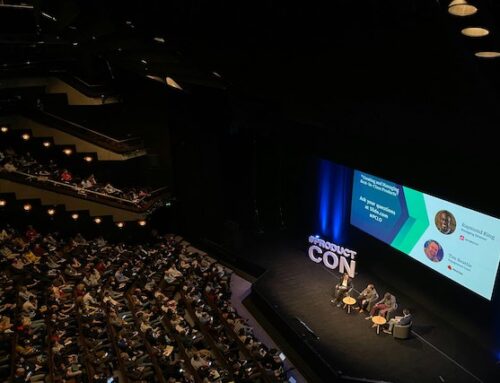
ConnectIn

Over the last few years, hybrid events production has massively influenced the way businesses bring people together. The successful ones combine the sheer energy of live gatherings with the accessibility of virtual ones. However, they also bring challenges, the toughest of which is knowing how to nail the delicate balance of satisfying both in-person and remote audiences.
The good news? Adopting the strategies employed by the leading hybrid event companies will help you create memorable experiences that work for all guests, regardless of where they’re joining from. Our compilation of 18 essential tips for mixed gatherings will help you navigate any uncertainty, dodge the undesirable stuff, and deliver an event that lands for everyone.
The Essential Do’s: Your Hybrid Events Production Blueprint
The foundation of successful hybrid events production lies in strategic planning and thoughtful execution. Mastering these techniques will help you create rewarding experiences where nobody feels like an afterthought, and both in-person and virtual audiences are engaged and satisfied throughout.
Ask the Big Question: Do You Actually Need a Hybrid Event?
Before diving into hybrid events production, step back and consider where the demand lies. Have you consulted guests to understand what ratio would prefer to attend in-person versus remote? There’s no point doubling your workload (and possibly budget) if 90% of your audience resoundingly favours one format over the other.
Investing in initial research is one of the tips for hybrid events we always suggest. The results could not only save you a wedge, they might also stop you from overcomplicating what could and should be a straightforward virtual or live event.
Lock Down Those RSVPs Like Your Budget Depends on it
Venue hire is one of the most expensive features of any live gathering, so only commit to it when you have firm guest numbers that justify the outlay. If your initial research indicates there isn’t much appetite for an in-person experience, consider switching to fully virtual instead.
Getting solid RSVPs early gives you the flexibility to pivot and prevents you from being stuck with a half-empty room that comes with a hefty price tag.
Internet Connection: Your Make-or-Break Foundation for Everything
It’s impossible to talk about tips for hybrid events without insisting that you check your venue has a stable and fast internet. Connection is one of the keys to your gathering’s success, and for virtual attendees, this is their lifeline to the event. If it snaps, they’re not temporarily disconnected, they’re gone. Sometimes permanently.
You can tackle this by contacting/visiting venues directly, checking reviews for connectivity mentions, and asking detailed questions about their wifi capacity. Also, remember to ask your location about backup systems and what happens during peak usage times. They might have great service at 10am on a Tuesday, but what about when 500 people are streaming video simultaneously at peak time on Friday evening?
Don’t just take their word for it; do your own research. This one is too important to leave to chance.
Test Everything (And Then Test It Again)
Your software, AV equipment, lighting, and sound systems should all be thoroughly tested well before event day. Check for issues that need urgent attention, and make sure lights, sounds, and video come through crystal clear for your remote crowd.
Run full dress rehearsals with your speakers and technical team as standard. And, finally, remember to test your backup systems as, if your main platform crashes, you’ll need to know how to switch to Plan B without missing a beat.
Master the Art of Audience Balance
The leading hybrid event companies get the balance between live and virtual guests exactly right. They know that favouring one side means the other will usually start checking their phones or catching up on emails. You can follow their lead by planning interactive tasks and moments that actively include everyone to keep both groups on board at all times.
This might mean having your in-person moderator explicitly ask virtual attendees for questions, or creating breakout sessions that mix both demographics. The key, again, is making sure neither group feels neglected.
Budget Like a Pro (Because Cut Corners Hurt)
Nailing your budget should be one of your absolute top priorities. Poor financial forecasting leads to those painful mid-planning conversations about which elements to keep and which to sacrifice. In short, corners will need to be cut, and nobody wants to be making those decisions at the last minute.
Bear in mind the additional costs of hybrid events production: streaming technology, extra AV equipment, virtual platform subscriptions, and potentially more staff to manage both groups. Ultimately, it’s better to overestimate and have some breathing room than to run out of funds with a couple of weeks to go.
Set SMART Goals
Hybrid event companies set crystal-clear goals from the outset. Nothing woolly like “Deliver a good show.” They make them SMART, meaning: Specific, Measurable, Achievable, Relevant, and Time-bound.
The numbers themselves could focus on ROI, content downloads, video views, audience engagement metrics, or how easily attendees retained important info, as measured through post-event surveys.
To do this, decide what’s most important to you in advance. This creates a reference point to return to later which shows how close you came to event perfection…and what you might need to improve next time.
Designate a Virtual Champion
Appoint a dedicated virtual host or moderator whose sole job is engaging with remote attendees, monitoring chat, and overseeing Q&A sessions. This person will be the voice and advocate for your virtual audience, ensuring that, during the main presentation, they’re always participating.
Think About Time Zones
If you’re planning for international audiences, consider the impact of different time zones very carefully. A convenient lunchtime start in your main business hub could mean a late-night stint for overseas employees. Some businesses adapt to this by recording key sessions for later access, resulting in content that has much more longevity.
Provide Networking Opportunities
When you’re not thinking about content and logistics, perhaps switch to working on networking opportunities for both audience types. Set up breakout rooms for virtual attendees and organise structured mingling activities for in-person guests. You could even provide a platform for hybrid networking, where both groups can interact together and make new connections, regardless of how they attended.
Always Have a Plan B (and C)
Prepare comprehensive contingency plans for technical failures. This means sourcing backup internet connections, spare microphones, alternative power sources, and backup streaming platforms. Tech has a nasty habit of failing at the worst possible moment, so your contingency planning should cover everything from total internet outages to equipment failures.
These tips form the foundation of successful hybrid events production. Get the fundamentals right, and you’re well on your way to creating an event that works for both audiences. But knowing what to do is only half the battle. Understanding what to avoid is equally crucial.
The Critical Don’ts: Hybrid Event Pitfalls to Avoid
We’ve discussed our top tips for hybrid events, now it’s time to focus on things to avoid. Even seasoned event professionals can stumble when transitioning to hybrid events production. And, while the following common mistakes can derail (otherwise) carefully planned occasions, when you know what to watch out for, they’re fairly preventable.
Don’t Abandon Your Virtual Audience During Breaks
Find ways to engage your remote guests during scheduled breaks. Why? Because when your in-person attendees are chatting over coffee, your virtual audience shouldn’t be left staring at a static “we’ll be right back” screen.
Options include virtual chat rooms, interactive content like polls and quizzes, or even mini-sessions specifically designed for remote attendees. By thinking of ways to keep them engaged and connected to each other during natural pause points, they’ll usually stay invested for longer spells.
Don’t Let Poor Production Values Sabotage Your Message
Try to avoid laptop cameras that show speakers from unflattering (below-the-chin) angles, or audio setups that mainly favour the live room. Production quality has a direct impact on how professional and credible your event will appear to remote participants. This means investing in proper lighting, positioning cameras at eye level, and delivering clear sound to both audiences.
Remember, for virtual attendees, technical competence is the backbone of the whole experience.
Don’t Let Virtual Chat Run Wild
Unmonitored virtual chats can quickly become distracting free-for-alls that veer totally off-topic. While spontaneous conversation is often fun, it’s not always productive when you’re trying to deliver focused content.
Assign someone to actively moderate the virtual chat, keeping discussions on-track while still allowing for a bit of natural interaction. Set clear guidelines early about appropriate chat behaviour to curb the free-for-all vibe.
Don’t Assume One-Size-Fits-All
Some interactive elements work brilliantly in-person, while falling completely flat for virtual attendees (and vice versa). A spontaneous group exercise that energises your live audience might leave virtual participants sitting awkwardly in silence and unsure how, or whether, to step forward.
Always consider how each activity will translate across both formats, and don’t be afraid to create different versions of the same exercise for each audience.
Don’t Skimp on Rehearsals
Hybrid events are significantly more complex than single-format events, requiring thorough run-throughs with all stakeholders present. Remember the old adage: failure to prepare means preparing to fail. This couldn’t be more true for hybrid events production.
Run full technical rehearsals, practice your contingency plans, and make sure every team member knows their role in serving both audiences. Even things that seem simple in theory might reveal unexpected complications during those priceless practice runs.
Don’t Forget Accessibility and Inclusivity
Everyone should be able to enjoy your event equally, right? Therefore, ensure both virtual and physical spaces accommodate attendees from diverse backgrounds, with varying technical capabilities, and including those with disabilities. Accessibility isn’t just a compliance checkbox; it’s essential for creating truly inclusive experiences that boost your reach and make a big impact.
Consider closed captions for virtual attendees, ensure your venue is physically accessible, and provide materials in multiple formats where possible.
Don’t Treat Feedback as an Afterthought
Specialist hybrid event companies collect separate feedback from both virtual and in-person guests. The reason? What went down a storm for one audience might have bombed with the other — and only post-event surveys will reveal the full range of opinions. Ask both camps about their experience to see what worked and what needs some fine tuning next time around.
FAQs About Hybrid Events
Q: What is hybrid event management?
A: Hybrid event management involves planning and executing events that serve both in-person and virtual audiences simultaneously. They require specialised technology and the ability to engage dual audiences, often from around the globe.
Q: What is an example of a hybrid event?
A: A product launch where attendees gather in-person while others join virtually via streaming platform, both accessing the same content through different participation methods.
Q: What are the 5 C’s of event planning?
A: The 5 C’s are:
- Concept (purpose/theme).
- Coordination (logistics/timelines).
- Control (quality/budget).
- Culmination (execution).
- Closeout (evaluation/follow-up).
Every single one of these event planning considerations will become more complex in hybrid formats, so make sure to plan accordingly.
Q: What are the advantages of hybrid events?
A: Expanded global reach, cost-effective attendance options, recorded content creation, higher overall participation rates, and flexible access for diverse audiences regardless of location.
Q: What are the disadvantages of hybrid events?
A: Increased complexity and costs, potential technical failures, challenging dual-audience engagement, less natural virtual networking, and difficulty maintaining equal experience quality for both groups.
One of the UK’s Leading Hybrid Event Companies
Successful hybrid events production isn’t about choosing between in-person and virtual experiences — it’s about combining the best of both worlds in one package. Our tips for hybrid events provide a roadmap for creating engaging, inclusive experiences that all participants can enjoy, regardless of where they’re located. Following our time-tested strategies, while avoiding the common pitfalls, results in events that justify their complexity by providing actual value.
Experienced hybrid event companies like ConnectIn Events bring the level of expertise and tech-knowhow needed to execute these challenging productions flawlessly. We specialise in balancing the benefits of physical and online formats in seamless style, offering a standard of technical expertise, user-friendliness, and content production that will wow all demographics.
Ready to bridge the miles and impress your guests? Connect with us today.
Share this post
Related posts
- 7 Best Venues in Manchester for Corporate Events
- 7 Reasons You Need a Hybrid Event Planner for Your Next Corporate Event
- Event Trends 2026: How to Create Corporate Events People Remember
- The Ultimate Hybrid Event Planning Checklist (for Corporate Events)
- Hybrid Events Production: 18 Game-Changing Do’s and Don’ts




